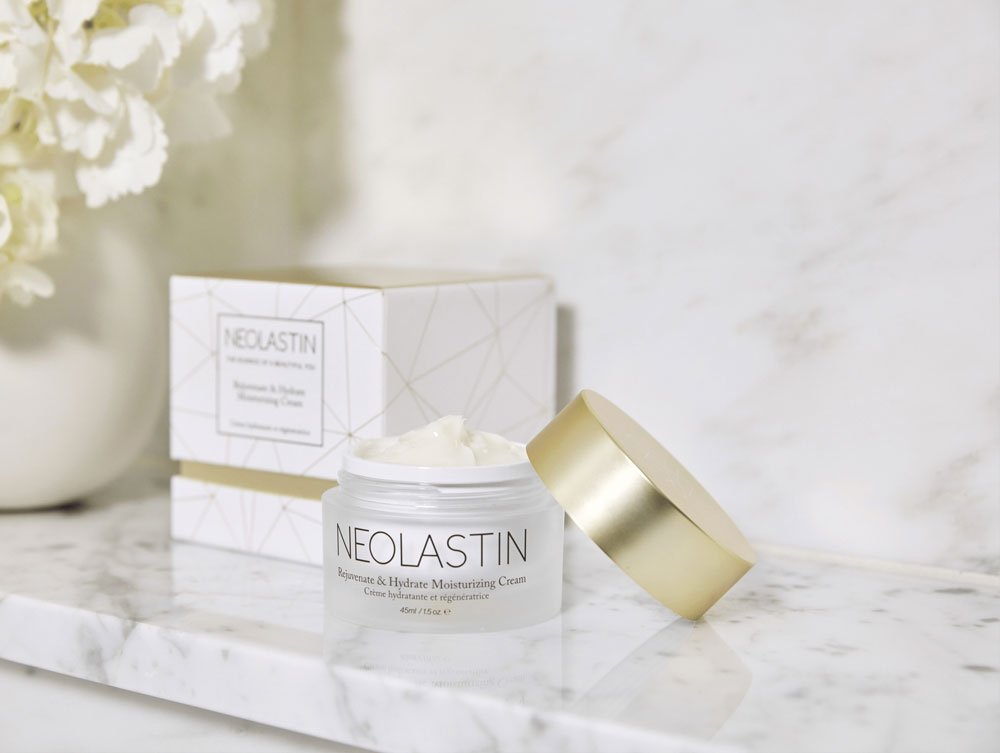
Skin can become dry and dehydrated when it loses water too quickly—not unlike our bodies on a scorching summer day or after a grueling cardio workout. When our skin loses that water, it’s called transepidermal weather loss (TEWL). For those of us with dry skin, that means our skin cells have a hard time keeping water in. Add to that environmental aggressors like sun, wind, pollution, polar/cold climates and the skin barrier can also be compromised - making skin drier and more fragile and susceptible to cracking and irritation. A few common characteristics of dry skin include dullness, flakey-ness, tightness, itchiness, redness, and just (sigh) general discomfort. In short, dry skin is no fun. But it is common—and almost everyone will grapple with it at some point.
Some people are genetically predisposed to dryer skin and deal with it even as teenagers, when skin typically overproduces oil. Others battle parched complexions seasonally (particularly in the dry depths of winter) or situationally (e.g. long, hot showers, certain medications and even overly aggressive skincare can all cause excessive moisture loss). And of course, all skin becomes drier as we age, so even if you’ve never considered your skin on the dry side, it will be…eventually.
The good news is dry skin doesn’t have to stay dry. There are lots of simple, easy-to-adopt strategies that will soothe and soften almost instantly. Here are 7 dry skin tips to set you on the path to smoother, more supple skin.
1. Turn on a humidifier
Dry skin can be caused—or exacerbated—by central heating, fireplaces and wood-burning stoves. If you live in a climate that dips below 50 degrees during the winter, you’re likely well aware of this. Turning on a humidifier overnight—or placing a small one near your work space during the day—will consistently mist and hydrate the air, helping to mitigate the moisture-zapping properties of all that exposure to indoor heat.
2. Ease up on the steamy showers
Yes, it does feel so good—especially on a frigid day. But too much time in a long, hot shower or bath can remove natural oils from your skin, as well as disrupt your skin’s protective barrier function (which can cause you to lose moisture even outside the shower). So, as a general rule, try to suds and rinse in less than ten minutes and keep the water temperature closer to warm than hot.
3. Choose a gentle cleanser
Using a harsh antibacterial soap, which is designed to remove sweat and oil, will also strip moisture from your skin, leaving it itchy and dry. This result is often worsened in the winter months when skin is most vulnerable. So, try to stick to body and face cleansers that are creamy and moisturizing, like Neolastin Wash & Refresh Cleansing Gel Cream, which effectively removes makeup and impurities, but does it without stripping moisture from the skin or disrupting the skin’s barrier function.
4. Slather on moisture asap
Layering on moisturizing serums and creams, such as Neolastin Face & Neck Regenerative Serum topped by Neolastin Revitalize & Firm Eye Cream and Neolastin Rejuvenate & Hydrate Moisturizing Cream, immediately after cleansing will help seal water into the skin, as well as support the skin’s barrier function. Same goes for your body: Aim to always apply a hydrating cream right after showering or bathing—and massage in a nourishing hand lotion, such as Neolastin Nourish & Restore Anti-Aging Hand Treatment, every time you wash up. Note: To maximize the hydrating potency of the aforementioned formulas, always blot, rather than rub, with a towel after showering or cleansing. Blotting gets rids of any dripping water but still leaves a light film of moisture for your serums and creams to seal inside the skin.
5. Slough with care
Slathering on moisturizer is crucial in treating dry skin, but if the buildup of dead skin cells on your face has become nearly impenetrable, those formulas can’t permeate and nourish your skin. So, it’s also imperative that you use a gentle scrub or an exfoliating toner, such as Neolastin Exfoliate & Smooth Tripe Hydroxy Acid Toner, to routinely remove dead surface skin cells. Do this step a few times a week after cleansing, but before moisturizing.
6. Take cover
In bitter-cold climates, the skin can lose moisture at an accelerated rate—as much as 25 percent more than it does in a moderate climate. So, If your home state’s winter weather can become quite harsh, try to prioritize covering as much skin as possible whenever you head outdoors. Scarves, hats, knee socks and gloves should be considered as essential as shoes.
7. Drink up
Keeping your skin hydrated starts with quenching your body’s thirst for water. So, try to down the expert-recommended 64 ounces of liquid each day (non-caffeinated beverages like tea or seltzer also count). And feel free to toss back more, if you're still thirsty. Also, try to limit both caffeinated and alcoholic drinks to no more than two per day, as both are diuretics and can accelerate water loss, undoing all the good-skin deeds, above.
Though we commonly discuss dry skin during the colder, drier winter months, it’s actually a year-round problem. The key to curbing your skin’s moisture loss is both making small lifestyle changes, and sticking to a soothing, hydrating skincare regimen.
